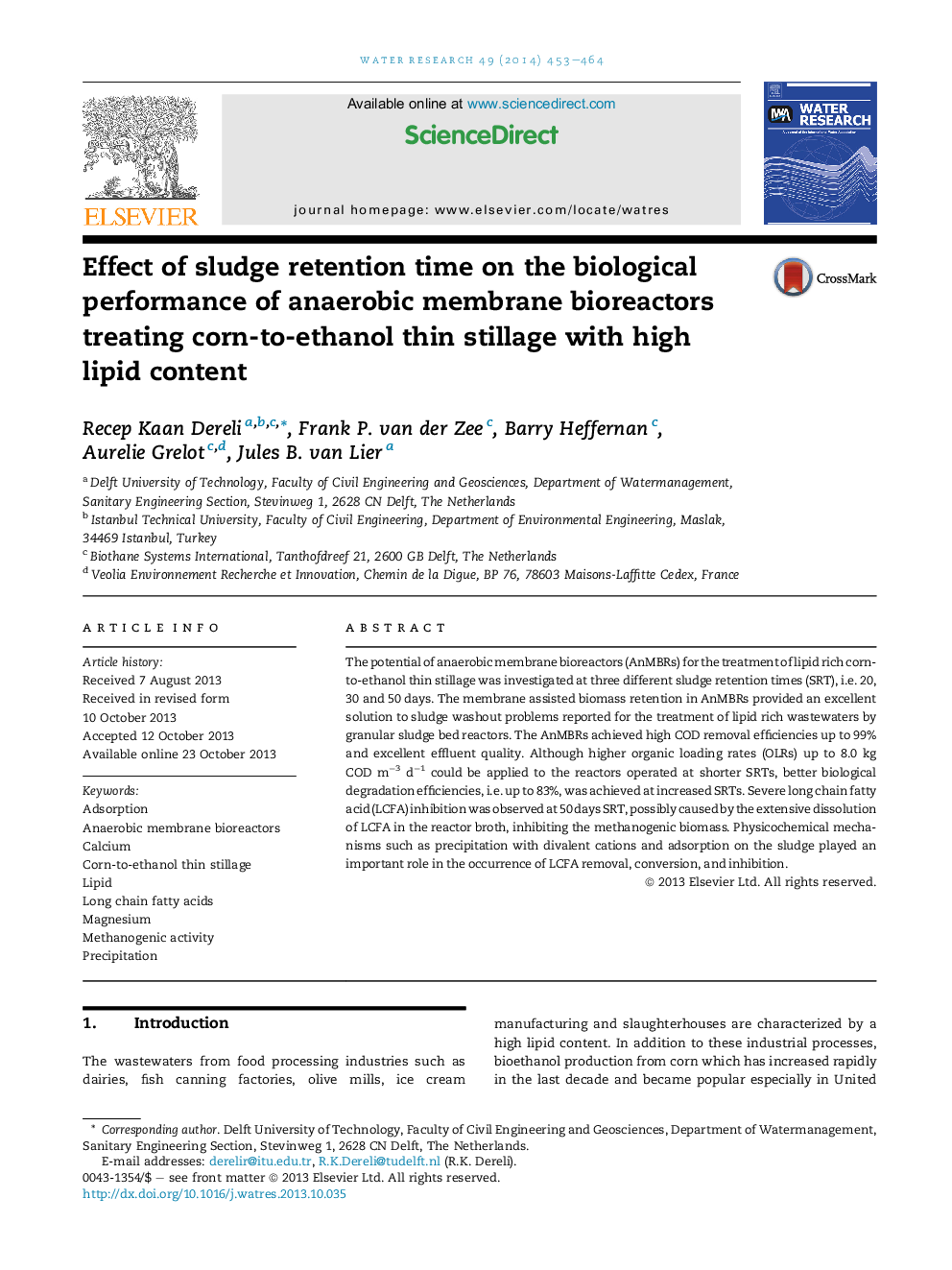| Article ID | Journal | Published Year | Pages | File Type |
|---|---|---|---|---|
| 4481725 | Water Research | 2014 | 12 Pages |
•AnMBRs provided a solution to sludge washout problems reported for treatment of lipid rich wastewaters.•The AnMBRs achieved high COD removal efficiencies up to 99% and reliable effluent quality.•Better biological degradation efficiencies, i.e. up to 83%, was achieved at increased SRTs.•Biological and physicochemical mechanisms were effective on LCFA removal, conversion, and inhibition.•Reversible LCFA inhibition was observed at increased SRT.
The potential of anaerobic membrane bioreactors (AnMBRs) for the treatment of lipid rich corn-to-ethanol thin stillage was investigated at three different sludge retention times (SRT), i.e. 20, 30 and 50 days. The membrane assisted biomass retention in AnMBRs provided an excellent solution to sludge washout problems reported for the treatment of lipid rich wastewaters by granular sludge bed reactors. The AnMBRs achieved high COD removal efficiencies up to 99% and excellent effluent quality. Although higher organic loading rates (OLRs) up to 8.0 kg COD m−3 d−1 could be applied to the reactors operated at shorter SRTs, better biological degradation efficiencies, i.e. up to 83%, was achieved at increased SRTs. Severe long chain fatty acid (LCFA) inhibition was observed at 50 days SRT, possibly caused by the extensive dissolution of LCFA in the reactor broth, inhibiting the methanogenic biomass. Physicochemical mechanisms such as precipitation with divalent cations and adsorption on the sludge played an important role in the occurrence of LCFA removal, conversion, and inhibition.
